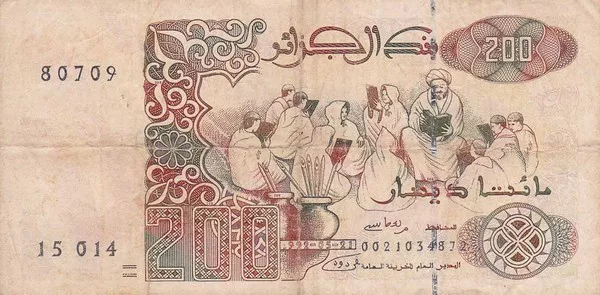Algeria, a North African nation with a rich history and diverse culture, boasts a unique financial landscape that is deeply rooted in its economic history. The Algerian dinar (DZD) serves as the official currency, and comprehending how it operates is crucial for residents, businesses, and anyone engaging in economic activities within the country. In this article, we will delve into the various aspects of Algerian money, exploring its history, denominations, and the factors influencing its value.
Historical Perspective:
The Algerian dinar has a fascinating history that reflects the nation’s journey from colonization to independence. Before gaining independence from French rule in 1962, Algeria used the French franc as its official currency. Following independence, the Algerian government introduced the Algerian dinar as a symbol of sovereignty and economic autonomy.
Initially pegged to the French franc, the dinar underwent several adjustments to establish its own value based on Algeria’s economic conditions. Over the years, the currency has experienced fluctuations influenced by global economic factors, internal policies, and geopolitical events.
Denominations and Coins:
The Algerian dinar is subdivided into smaller units, with coins and banknotes representing different denominations. As of the latest information available, coins are issued in denominations of 1, 2, 5, 10, 20, and 50 dinars, each featuring unique designs and symbols reflective of Algeria’s cultural heritage. These coins circulate alongside a diverse range of banknotes, including 100, 200, 500, 1000, and 2000 dinar denominations.
The central bank of Algeria, Banque d’Algérie, is responsible for issuing and regulating the country’s currency. The bank plays a pivotal role in maintaining the stability and integrity of the Algerian dinar in the face of economic challenges and external influences.
Monetary Policy:
The monetary policy of Algeria, formulated and implemented by Banque d’Algérie, plays a crucial role in determining the value of the dinar. The central bank utilizes various tools and mechanisms to manage inflation, stabilize prices, and foster economic growth. Interest rates, reserve requirements, and open market operations are among the instruments employed to influence the money supply and ensure a stable financial environment.
Exchange Rate Mechanisms:
The value of the Algerian dinar in international markets is influenced by several factors, including trade balances, foreign exchange reserves, and geopolitical events. Algeria employs a managed float exchange rate system, allowing the dinar’s value to fluctuate within a specified range. The central bank intervenes as needed to maintain stability and prevent excessive volatility that could impact the economy.
International Trade and Reserves:
Algeria’s economy heavily relies on the export of hydrocarbons, particularly oil and natural gas. As a result, fluctuations in global oil prices have a direct impact on the country’s revenue and, consequently, its foreign exchange reserves. The government strategically manages these reserves to ensure the stability of the dinar and mitigate the effects of external shocks on the economy.
In recent years, Algeria has sought to diversify its economy and reduce its dependence on hydrocarbon exports. Efforts to promote non-oil sectors and attract foreign investment contribute to the overall resilience of the economy and enhance the stability of the dinar.
See Also: What Is The Abbreviation For Algerian Dinar?A Comprehensive Guide
Inflation and Economic Challenges:
Like any other currency, the Algerian dinar is susceptible to inflationary pressures, which can erode its purchasing power over time. The government and central bank collaborate to implement policies that address inflation and maintain price stability. Additionally, challenges such as unemployment, public debt, and structural issues within the economy can impact the value of the dinar.
Conclusion:
Understanding how Algerian money works is essential for anyone navigating the economic landscape of this North African nation. From its historical roots to the intricacies of monetary policy, the dynamics of the Algerian dinar are shaped by a complex interplay of domestic and international factors. As Algeria continues to evolve and adapt to the changing global economic environment, a comprehensive understanding of its currency is crucial for individuals, businesses, and policymakers alike.


